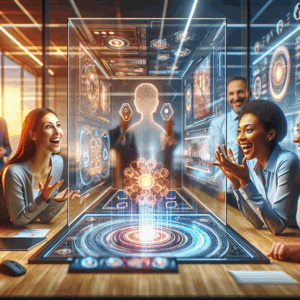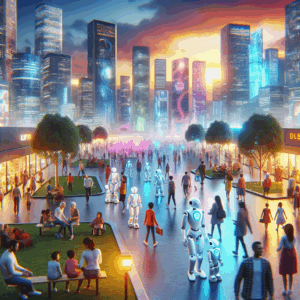Introduction
In the rapidly evolving landscape of artificial intelligence (AI), a paradoxical strategy is gaining traction: using AI as a defense against the very threats it poses. This concept echoes the historical “Oppenheimer moment,” when J. Robert Oppenheimer reflected on the dual nature of nuclear technology—capable of both creation and destruction. Today, AI presents similar challenges, with its potential to automate jobs and contribute significantly to the global economy, yet also posing risks such as cybersecurity threats and misinformation. As we explore this paradox, we’ll delve into the benefits and risks of using AI as a defense mechanism, its ethical implications, and the future of AI regulation.
Understanding the Oppenheimer Moment
The term “Oppenheimer moment” refers to the realization that powerful technologies can have both beneficial and destructive uses. J. Robert Oppenheimer, after witnessing the first atomic bomb test in 1945, famously quoted from the Bhagavad Gita, “Now I am become Death, the destroyer of worlds.” This moment encapsulates the complex feelings about creating technologies that can bring about immense destruction. Similarly, AI’s dual nature—offering solutions like enhanced productivity and security while posing threats like job displacement and privacy breaches—parallels the nuclear dilemma of the past.
The Dual Nature of AI
AI can be both a threat and a solution. On one hand, it poses significant risks, such as automating jobs and contributing to cybersecurity vulnerabilities. On the other hand, AI can be used to defend against these very threats:
- Cybersecurity: Companies like Darktrace employ AI to detect and respond to cyber threats in real time, forming a robust defense against sophisticated attacks[1].
- Misinformation Combat: Platforms like Facebook use AI algorithms to identify and limit the spread of misinformation, enhancing content credibility[2].
The Ethical Landscape
The use of AI as a defense mechanism raises significant ethical concerns. While AI can enhance security and efficiency, it also risks creating new threats, such as biased decision-making systems and privacy violations. Researchers emphasize the need for ethical guidelines in AI development to prevent harmful consequences[3]. The Partnership on AI highlights concerns about bias in AI systems, particularly in law enforcement and surveillance, underscoring the need for ethical oversight[4].
A Look at the Future: Regulation and Policy
As AI technologies continue to evolve, there is a growing need for regulatory frameworks to ensure their safe and ethical use. The U.S. Biden administration has proposed a blueprint for an AI Bill of Rights, focusing on transparency and accountability[5]. The European Union is advancing an AI Act that classifies AI systems based on risk levels, imposing stricter regulations on high-risk systems. These initiatives aim to balance innovation with ethical considerations, ensuring that AI serves humanity without exacerbating existing societal challenges.
Conclusion
The idea that the best defense against AI is more AI presents a complex paradox. While AI can enhance security and efficiency, it also poses significant ethical and societal risks. As we move forward, it’s crucial to establish robust ethical frameworks and regulatory policies to ensure AI is developed and used responsibly. As Stuart Russell notes, “The risk of AI is not that it will become conscious, but that it will become competent and goal-directed without human oversight”. Elon Musk warns that AI could be “potentially more dangerous than nukes”. Ultimately, the future of AI depends on our ability to harness its potential while mitigating its risks. Will AI become the solution to the problems it creates, or will it exacerbate them? The answer lies in how we choose to develop and deploy this powerful technology.





